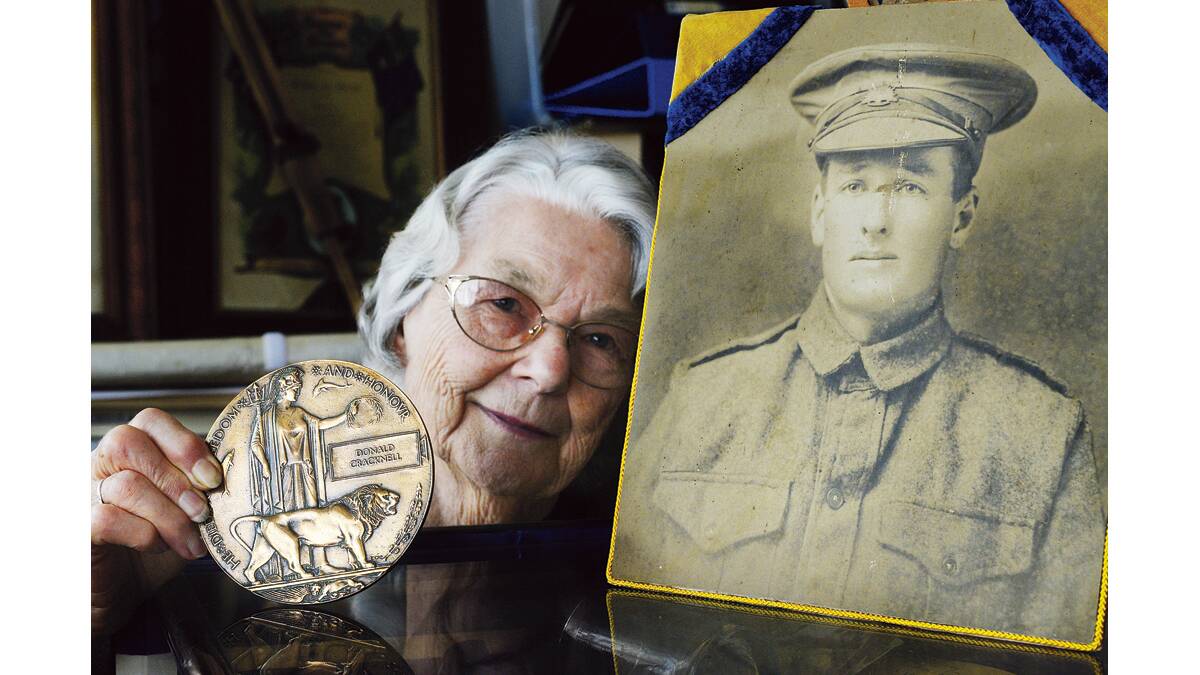When Donald Cracknell died on the battlefields of France in 1916 a bronze medallion was delivered to his mother.
Subscribe now for unlimited access.
or signup to continue reading

The Dead Man’s Penny, sent on behalf of King George V, did little to ease Susan Cracknell’s heartache of losing her 23-year-old son.
“None of them spoke about him,” the young soldier’s niece Adele Cockburn said. “In my grandmother’s lounge room there was a round table with a Bible and Uncle Donald’s photo next to it.
“There would always be a bunch of flowers on the table.”
Mr Cracknell was a 22-year-old lorry driver from the village of Kayuga outside of Muswellbrook when he enlisted in West Maitland on November 4, 1915.
Private Donald Cracknell of the 30th Battalion sailed from Sydney on the HMAT Anchises on March 14, 1916.
Five months later, on August 23, he died in a wagon en route to a field hospital after being wounded in the trenches.
“He only just got there and settled in, from what I’ve been told, he only just got settled into the fighting when it happened,” Mrs Cockburn said.
Mr Cracknell was buried in the Sailly Surlelye Military Cemetery, east of the larger Estaires Military Cemetery.
Family friend, Sarah McIntyre, travelled to the French battlefields a year later, and returned with a photograph of the fresh grave marked with a single wooden cross.
“He didn’t have to go, but he wanted to join his mates,” Mrs Cockburn said.
“They were going to fight in the day and meet the girls at night.”
She said her father, Stanley, had struggled with his younger brother’s death.
“Every year my father would go to the Anzac Day service and wouldn’t speak for the rest of the day.”
The penny, one of more than 60,000 delivered to the families of fallen Anzacs, is on loan to the Maitland Historical Society.
The Dead Man’s Penny was presented to the next of kin of the men and women who died in World War I.
The oversized penny depicts Lady Britannia alongside two dolphins and a lion at her feet.
The National Museum of Australia said the dolphins represented the Commonwealth’s sea power and the lion represents Britain.
An eagle that lies beneath the lion represents Germany.
The soldier’s rank was purposely left off the penny to show equality in their sacrifice.
Each penny is marked with the words: “He died for freedom and honour.”
Click here to find out what time Anzac Day services are on in your area.

